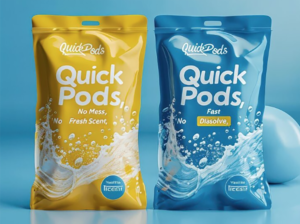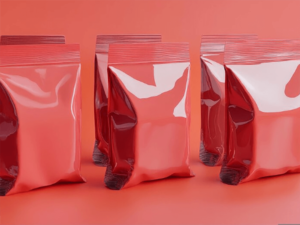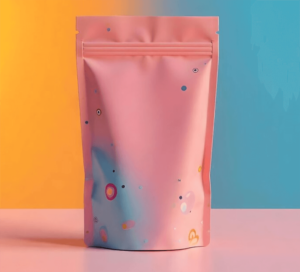The snack food industry is undergoing a significant transformation, driven by both consumer demand and environmental imperatives. As we move away from conventional plastic films, compostable snack packaging is emerging as a leading solution, offering a path to reduce waste without compromising product quality. This new generation of packaging is not just a sustainable alternative; it’s a catalyst for innovation across the entire packaging value chain, from material science to consumer interaction.
Food Safety Advancements in Modern Snack Packaging: Barrier Properties and Migration Control
The primary function of any food packaging is to ensure the product inside remains safe and fresh. For compostable materials, this presents a unique challenge: creating a protective barrier that is both effective and biodegradable. Modern advancements have led to the development of sophisticated multi-layer structures that provide excellent barrier properties against oxygen, moisture, and light. These layers often incorporate natural polymers and bio-based coatings that are meticulously engineered to prevent the migration of chemical components from the packaging into the food.
This focus on migration control is paramount, especially as consumers become more discerning about what they consume. Innovations in testing methodologies and material compositions ensure that these new eco-friendly solutions meet or exceed the stringent safety standards of traditional packaging. By combining high-performance barrier layers with compostable materials, the industry can confidently deliver a package that is both good for the planet and safe for the consumer.
High-Fat Snack Products: Specialized Packaging Requirements and Solutions
Snacks with a high-fat content, such as chips, nuts, and crackers, pose a particular challenge for packaging. These products are prone to rancidity and require a robust barrier to prevent fat from seeping through the packaging, which can degrade the product and create an undesirable greasy feel on the outside of the pouch.
Specialized compostable packaging solutions have been developed to address these issues. These include advanced coatings and laminations that are specifically designed to be grease-resistant. By creating a strong barrier at the molecular level, these materials prevent fat migration, preserving the freshness and crispness of the snack while maintaining the integrity and clean feel of the package. This ensures that even the most delicate high-fat snacks can be delivered in a sustainable format without sacrificing quality.
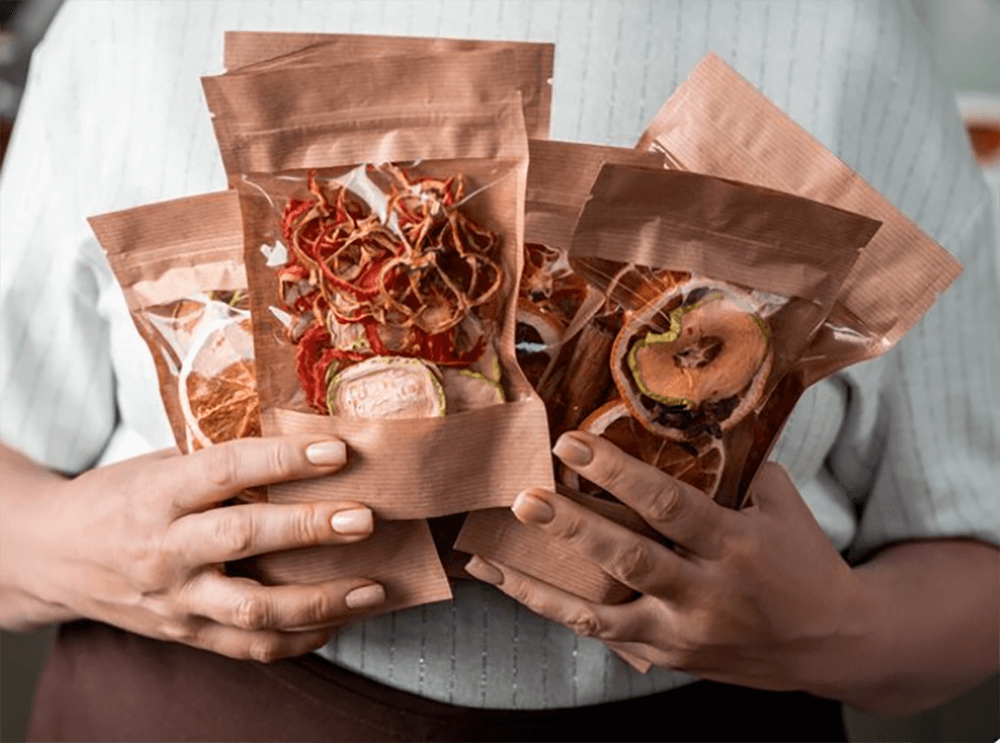
Interactive Packaging Elements for Snack Pouches: Enhancing Consumer Engagement
Packaging is no longer just a container; it’s a powerful tool for communication and brand building. Interactive packaging elements are becoming increasingly popular, turning a simple snack pouch into an engaging experience. QR codes on compostable pouches can link to a brand’s sustainability story, providing consumers with information on how to properly compost the packaging and learn about the brand’s commitment to the environment.
Other interactive features can include augmented reality experiences, where consumers can scan the package to play a game or unlock exclusive content. These elements create a deeper connection between the consumer and the brand, fostering loyalty and making the act of choosing a snack a more memorable and personalized event. This innovation shows that sustainability and consumer engagement can go hand in hand.
Resealable Innovations in Snack Packaging: Consumer Preferences and Technical Solutions
In a world of on-the-go consumption and mindful portion control, resealable packaging is a feature that consumers highly value. For compostable materials, creating a reliable and easy-to-use resealable seal requires careful technical innovation. Early challenges with material stiffness and seal integrity have been overcome with new, more flexible bio-based zippers and adhesives.
Modern solutions use advanced polymer blends that allow for a secure, airtight seal that can be opened and closed multiple times without losing its functionality. These technical solutions are designed to be intuitive for the consumer, ensuring that the package can be easily resealed to maintain freshness and prevent spills. The seamless integration of resealable functionality into compostable packaging meets a key consumer preference while upholding the product’s environmental promise.
Color Management in Snack Packaging Printing: Ensuring Brand Consistency Across Materials
For brands, maintaining a consistent and vibrant visual identity is crucial. When transitioning to compostable materials, which can have different surface properties and absorption rates than traditional plastics, color management in printing becomes a critical factor. The challenge is to ensure that the brand’s colors, logos, and graphics look exactly the same on the new eco-friendly packaging as they did on the old.
Sophisticated printing techniques and new ink formulations have been developed to address this. High-resolution digital printing and flexographic presses are now calibrated to work specifically with compostable films, ensuring precise color reproduction and sharp graphics. By establishing robust color profiles and using advanced spectrophotometers, brands can guarantee brand consistency across materials, preserving their visual identity while embracing sustainability.
Regional Preferences in Snack Packaging: A Global Market Analysis
The snack market is incredibly diverse, with consumer preferences for packaging varying significantly. While some consumers may prioritize aesthetics and convenience, others may be more focused on sustainability and transparency. A global market analysis reveals that packaging preferences are influenced by cultural norms, economic factors, and environmental awareness.
For example, in some markets, consumers may favor smaller, single-serving pouches for portion control, while in others, larger resealable bags for family consumption are preferred. Similarly, the demand for compostable packaging is particularly strong in regions with well-developed composting infrastructure and high levels of environmental consciousness. Understanding these regional preferences is key for brands looking to expand their reach, allowing them to tailor their packaging strategy to meet the specific needs of different consumer groups.
Robotics in Snack Packaging: ROI Analysis and Implementation Roadmap
The shift to compostable packaging materials also necessitates changes in the production line. Robotics are playing an increasingly important role in the automation and optimization of the packaging process. Robotic arms can handle delicate materials with precision, reducing waste and increasing the speed of production. An ROI analysis of implementing robotics in snack packaging shows significant long-term benefits, including reduced labor costs, increased efficiency, and improved consistency.
The implementation roadmap for integrating robotics involves a phased approach, starting with the automation of repetitive tasks like pouch filling and sealing. This allows companies to gradually transition to a more automated process, minimizing disruption and maximizing the return on investment. As compostable materials become more prevalent, robotics will be essential for handling these new, sometimes more delicate, films at high speeds.
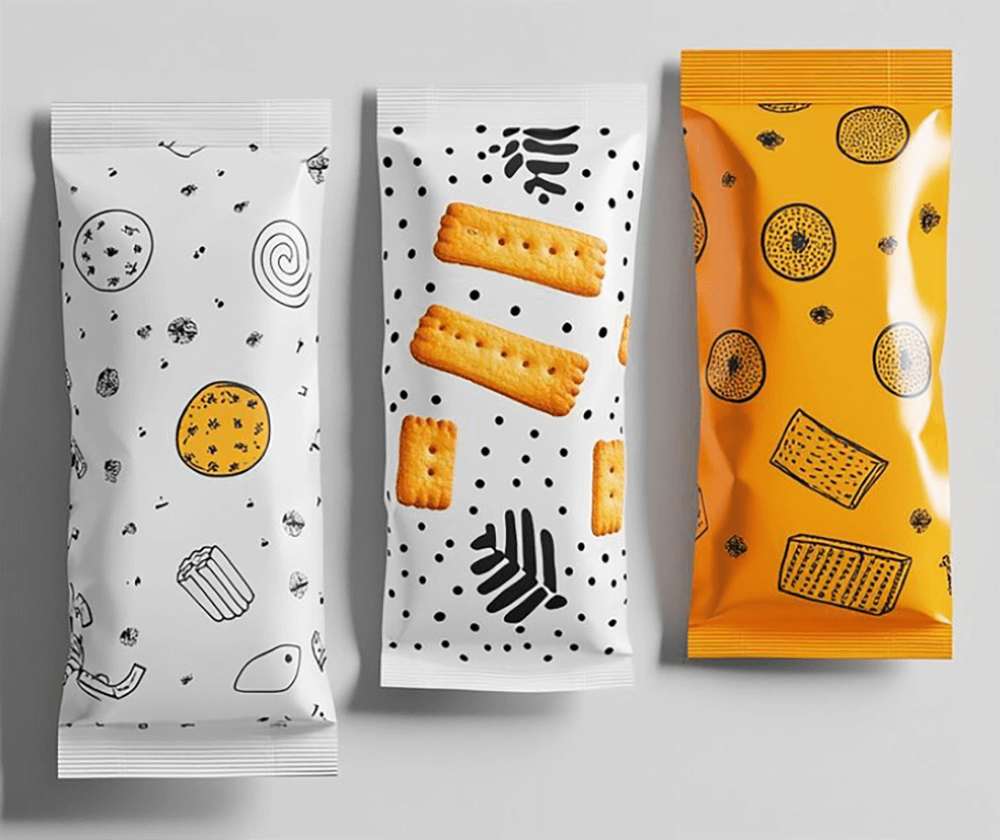
Protecting Fragile Snacks: Cushioning Technologies in Flexible Packaging
For delicate snacks like crackers and certain types of chips, breakage is a major concern. Cushioning technologies in flexible packaging are designed to protect these fragile products from damage during transit and handling. While traditional rigid packaging has been used for this purpose, new innovations in flexible, compostable pouches are providing an equally effective solution.
These solutions often involve creating a more robust pouch structure or incorporating air-filled channels that act as a buffer. By engineering the flexible film to absorb shock and pressure, these cushioning technologies ensure that the snack arrives at its destination in perfect condition. This not only enhances the consumer experience but also reduces food waste caused by damaged products.
Active Packaging Systems for Snack Products: Oxygen Scavengers and Moisture Control
To extend shelf life and maintain product quality, active packaging systems are being integrated into compostable snack pouches. These systems go beyond a simple barrier and actively work to control the environment inside the package. Oxygen scavengers are small packets or incorporated materials that absorb oxygen, preventing oxidation and preserving the freshness and flavor of the snack.
Similarly, moisture control elements, such as desiccants, can be embedded within the packaging layers to regulate humidity, keeping crunchy snacks crisp and preventing spoilage. These active systems are being developed with compostable materials in mind, ensuring that the entire package can be disposed of in an environmentally friendly way.
Easy-Open and Portion Control Innovations in Snack Pouches
Consumer convenience is a key driver of packaging design. Easy-open features, such as tear notches and laser scoring, are being perfected for compostable pouches, ensuring that the package can be opened cleanly and without frustration. These innovations are designed to be intuitive and accessible to all consumers.
Furthermore, portion control innovations are helping consumers manage their snack intake. This can be as simple as designing smaller single-serving pouches or as complex as a pouch with a clearly marked section that can be separated and resealed. These features not only cater to consumer preferences for convenience and health but also reduce waste by encouraging mindful consumption.
The shift towards compostable snack packaging is more than just a trend; it’s a comprehensive industry-wide evolution. From ensuring food safety and protecting fragile products to enhancing consumer engagement and convenience, every aspect of snack packaging is being re-evaluated and innovated upon to meet the demands of a more sustainable and conscious future.

